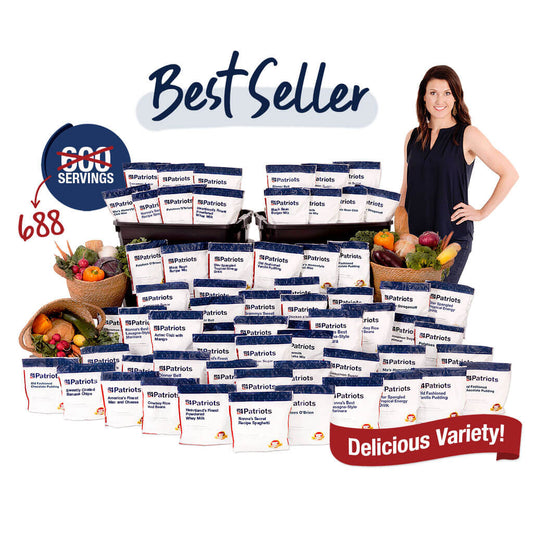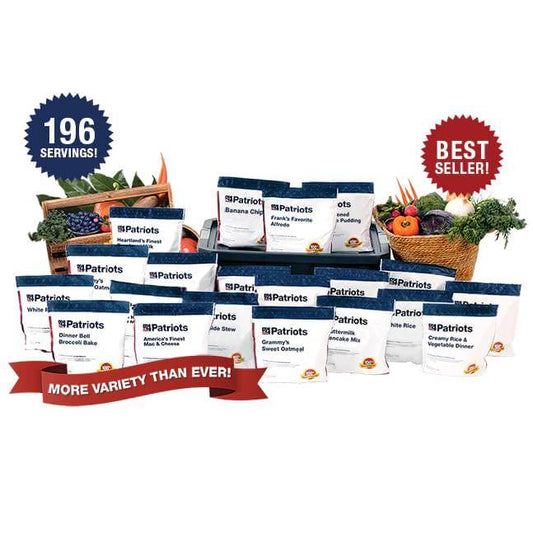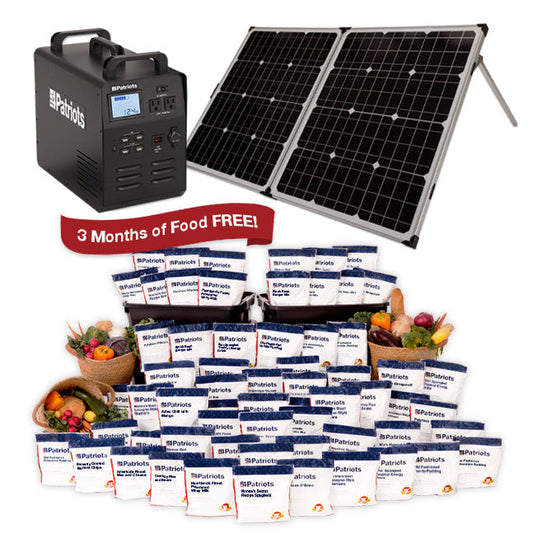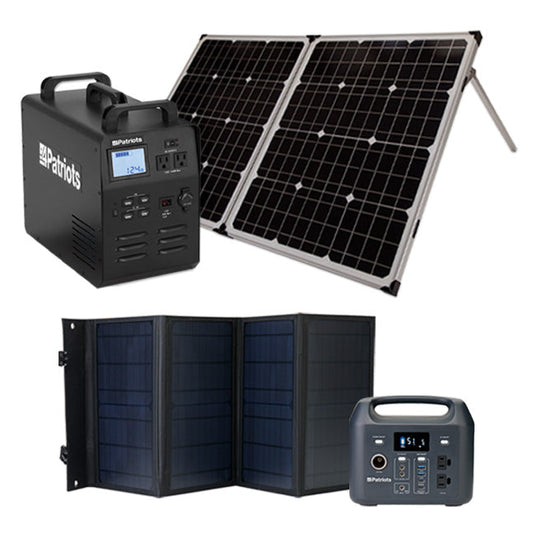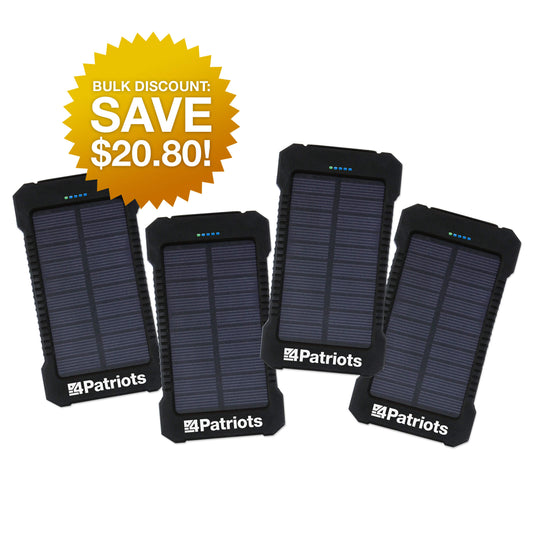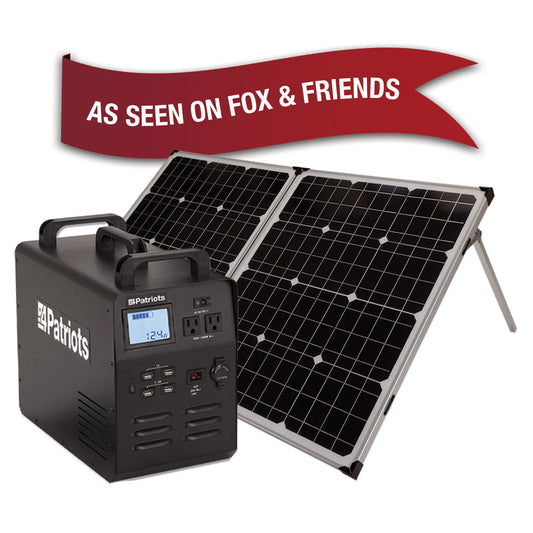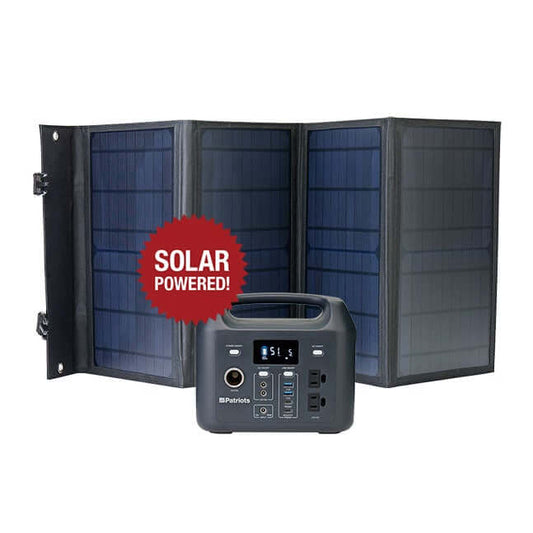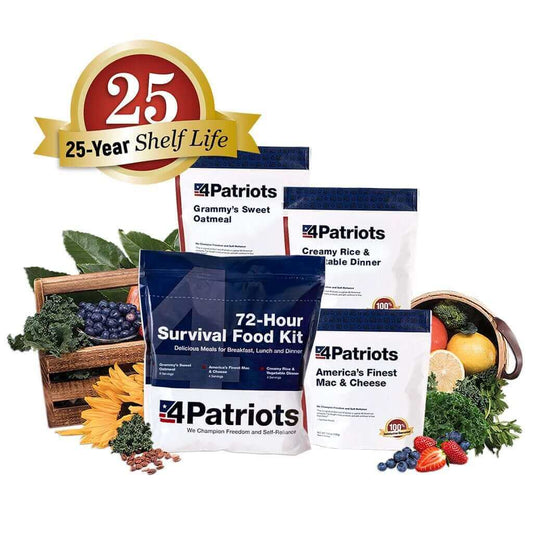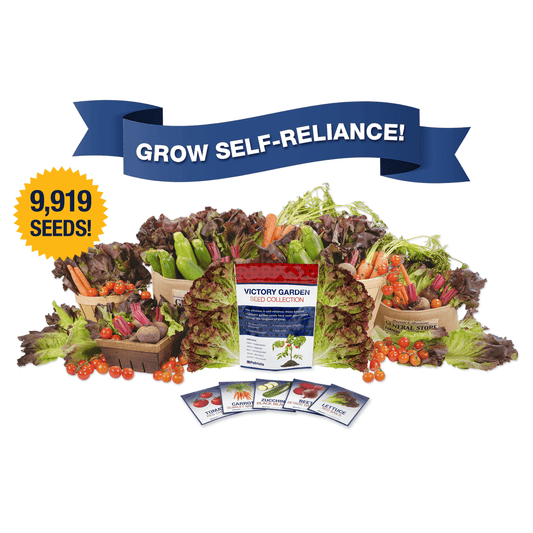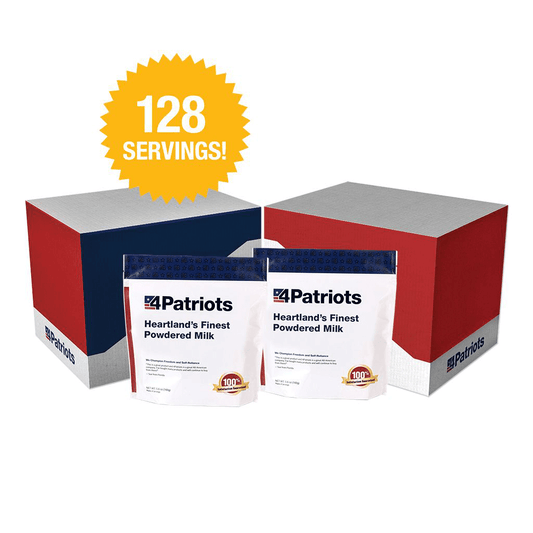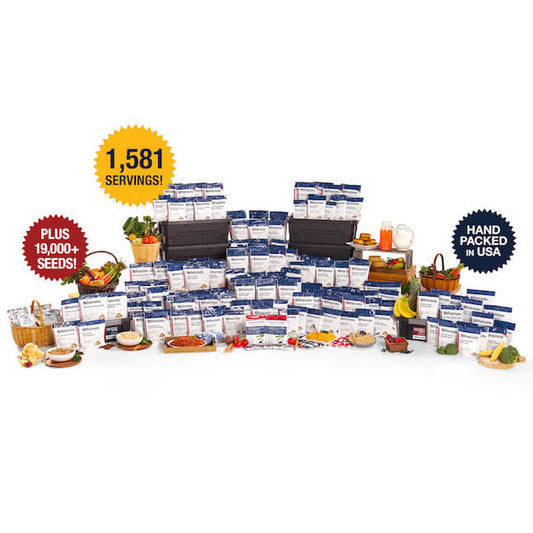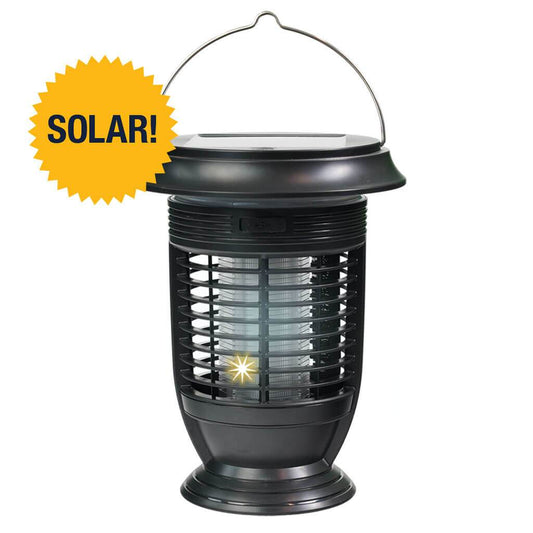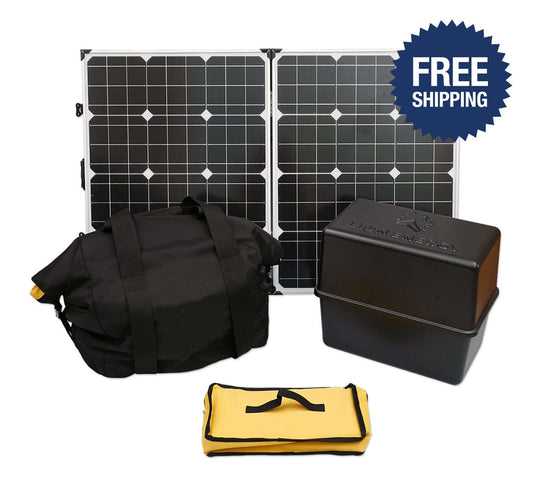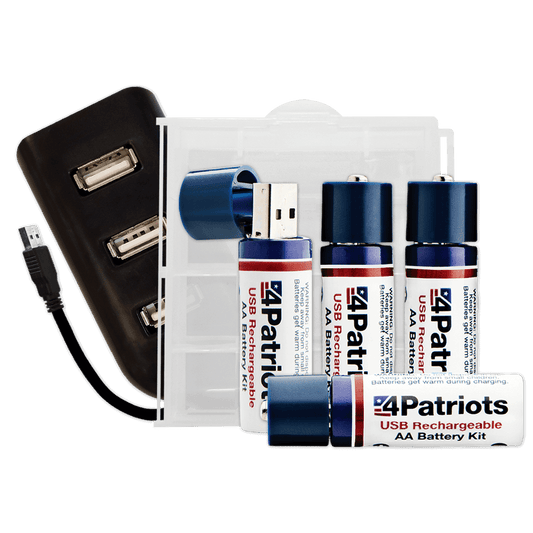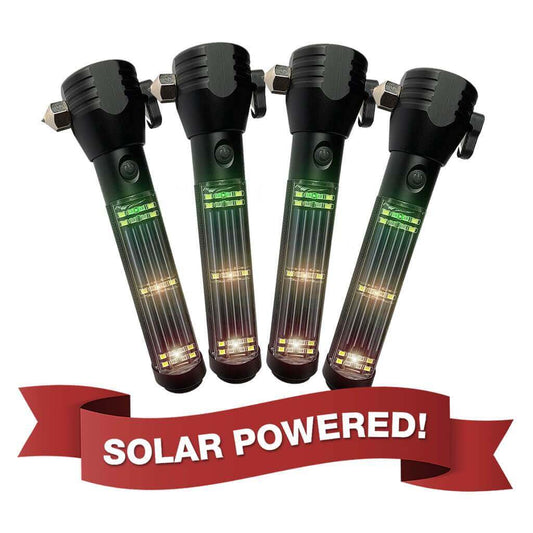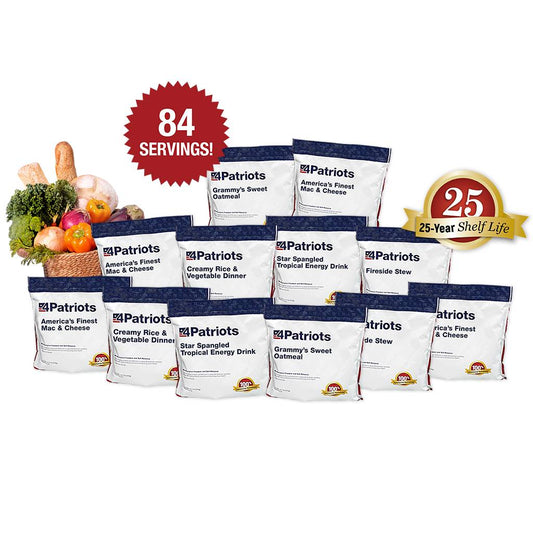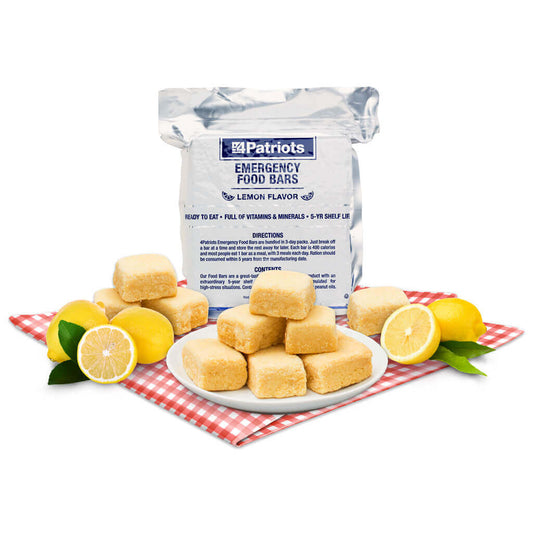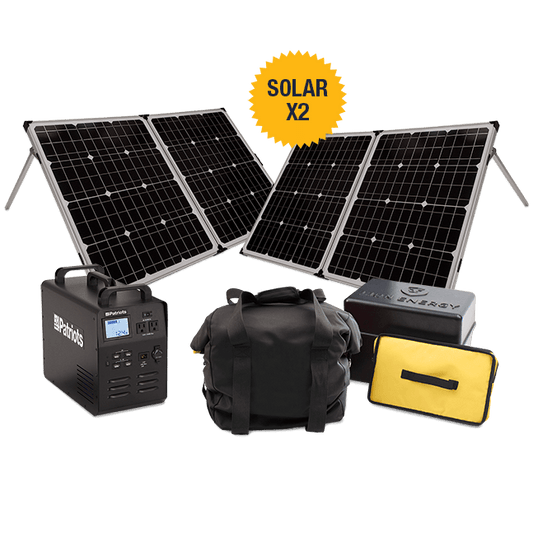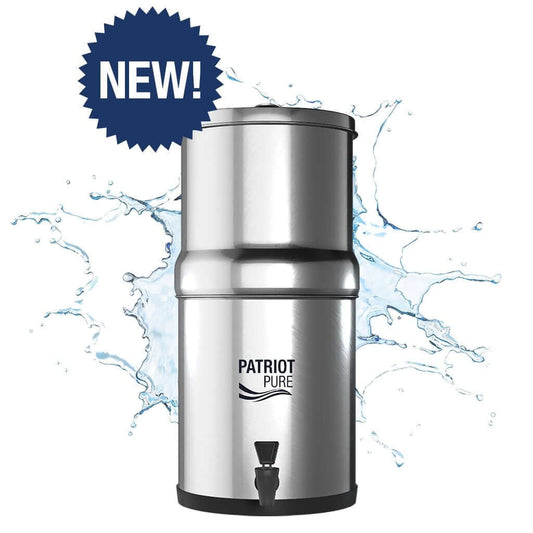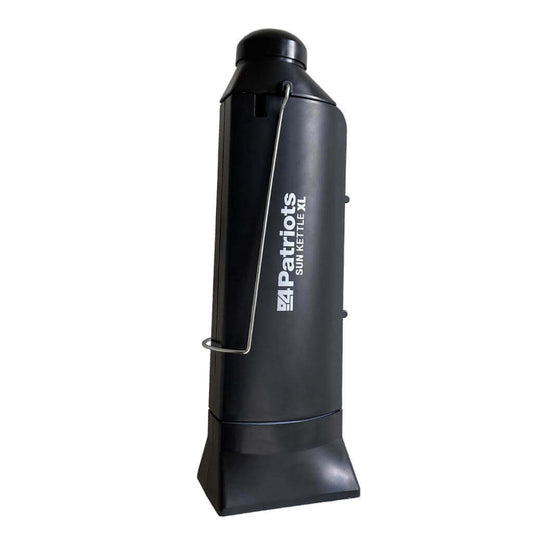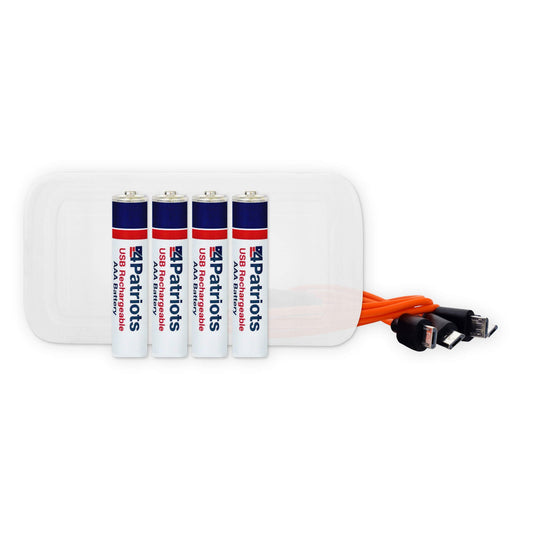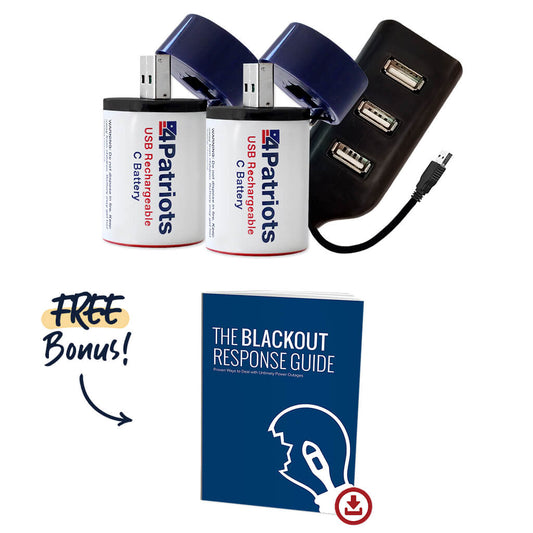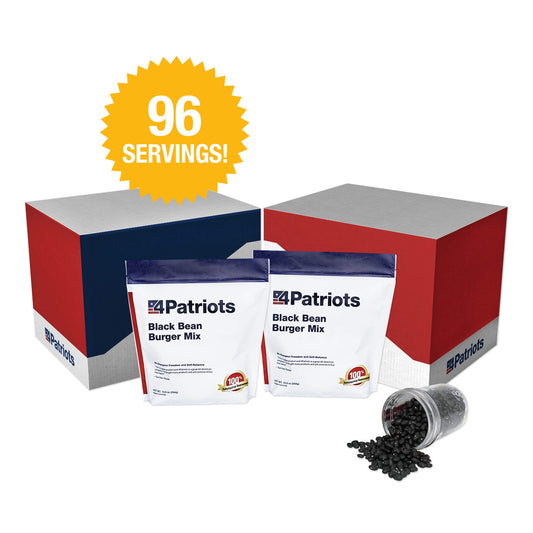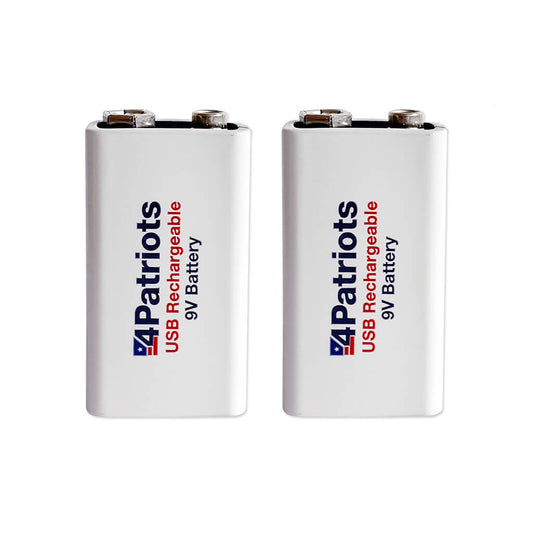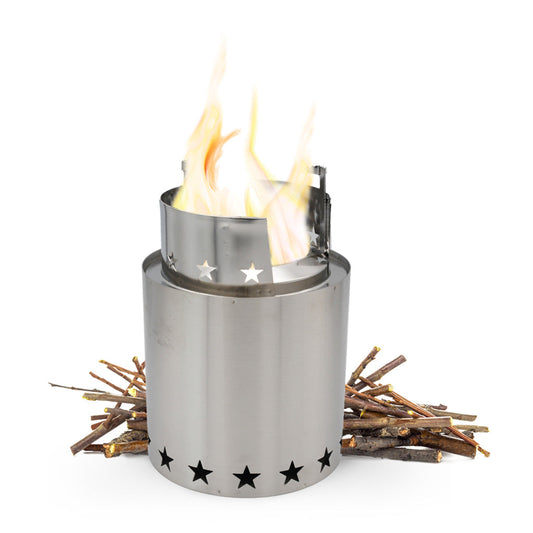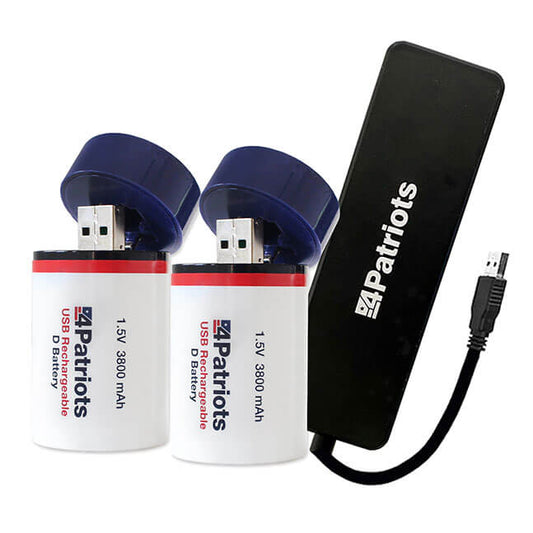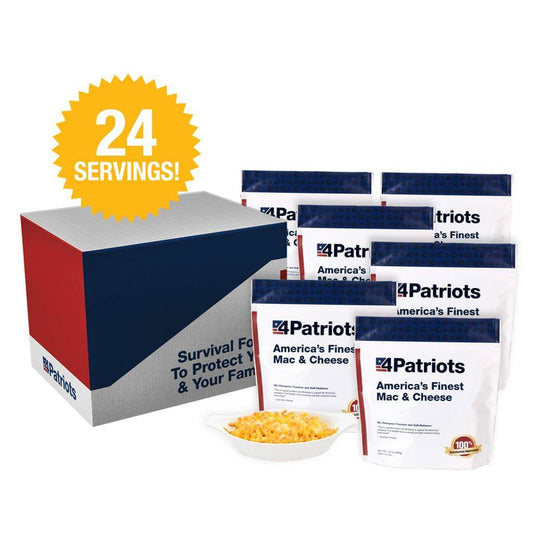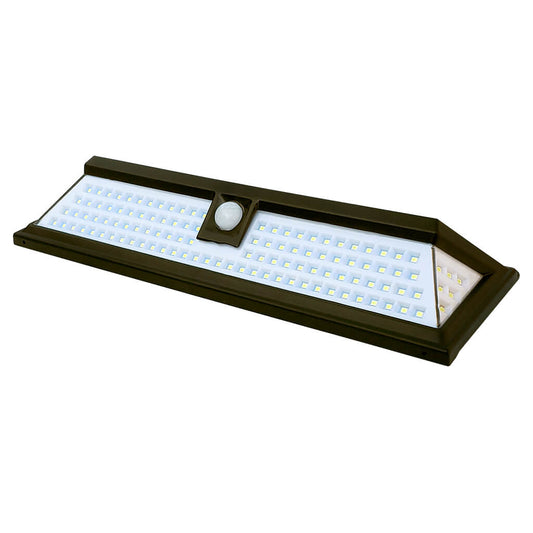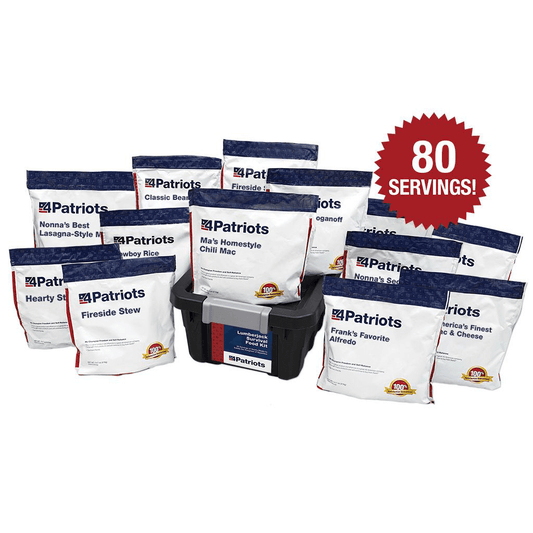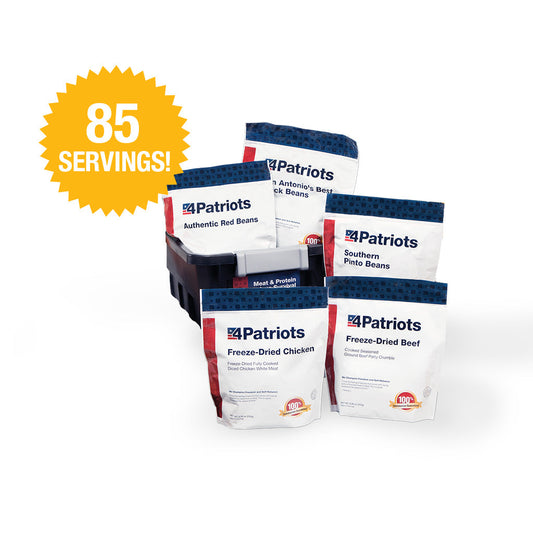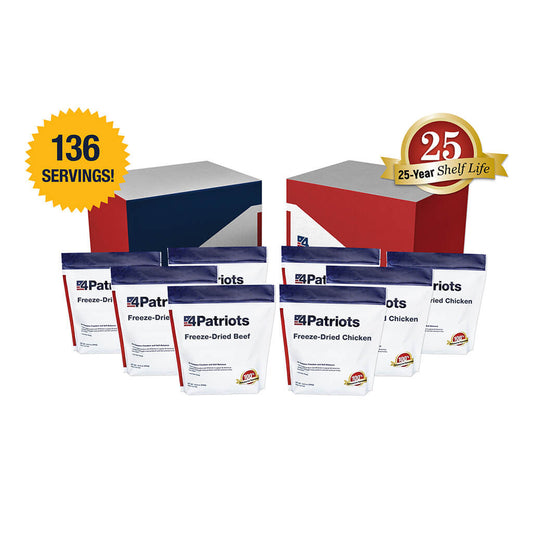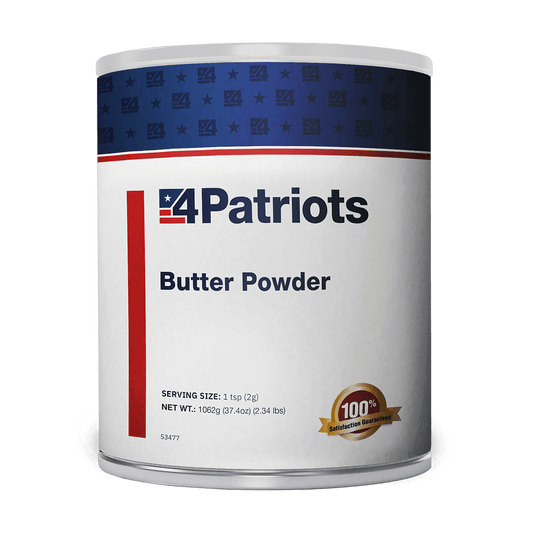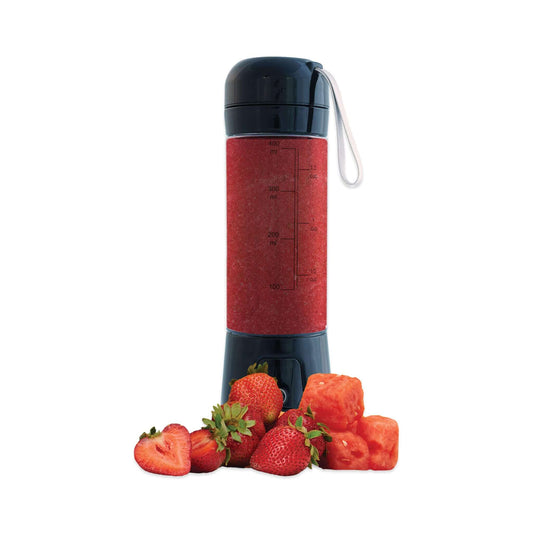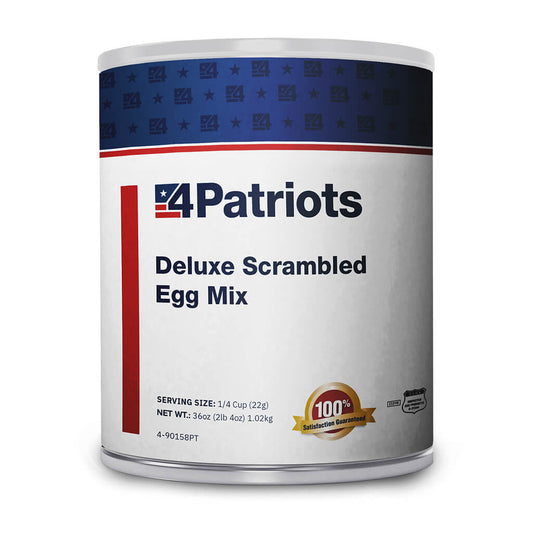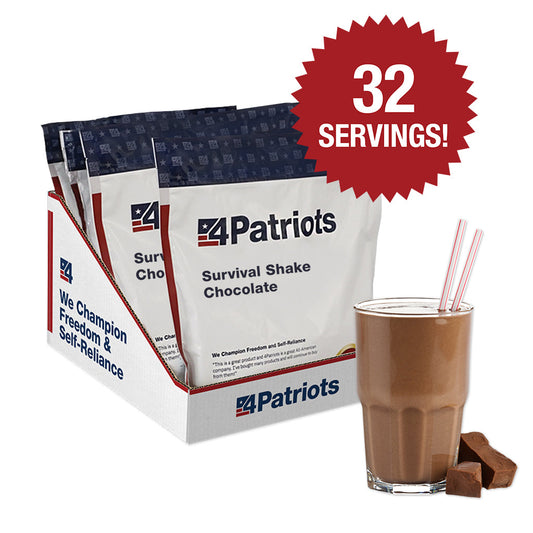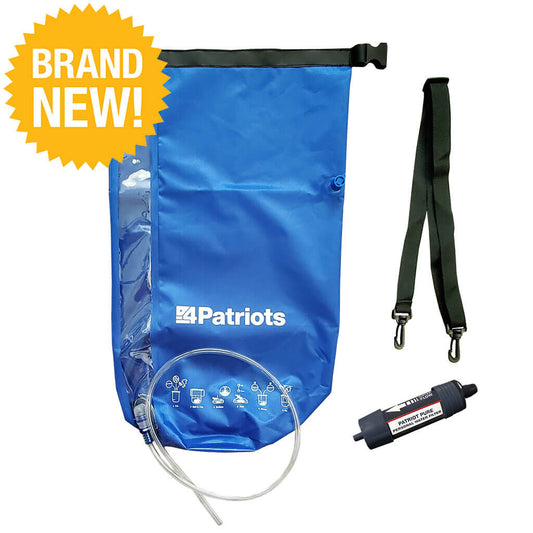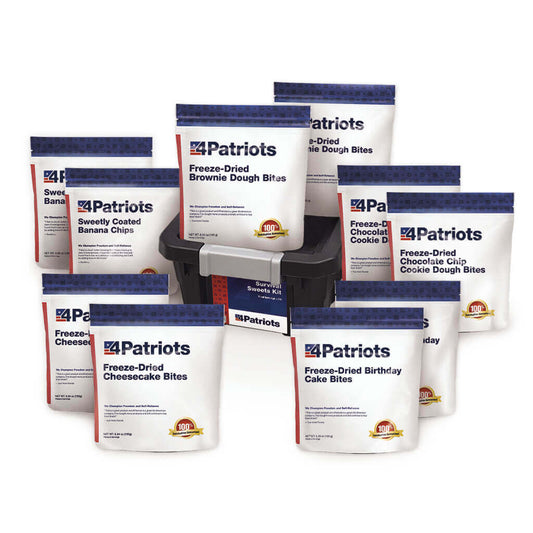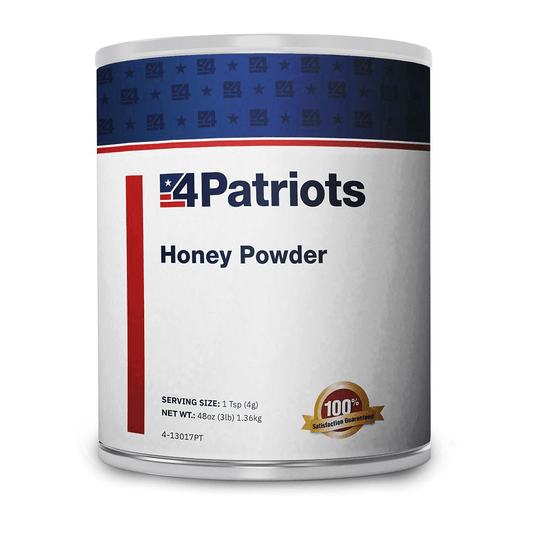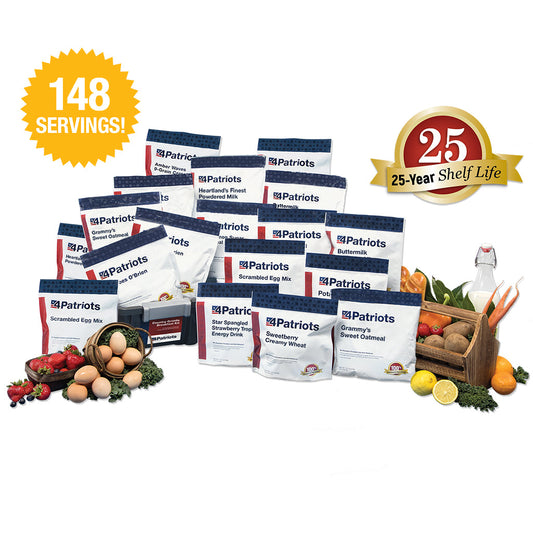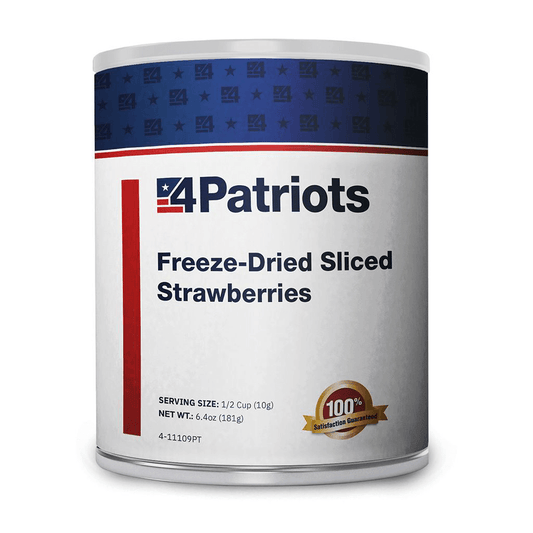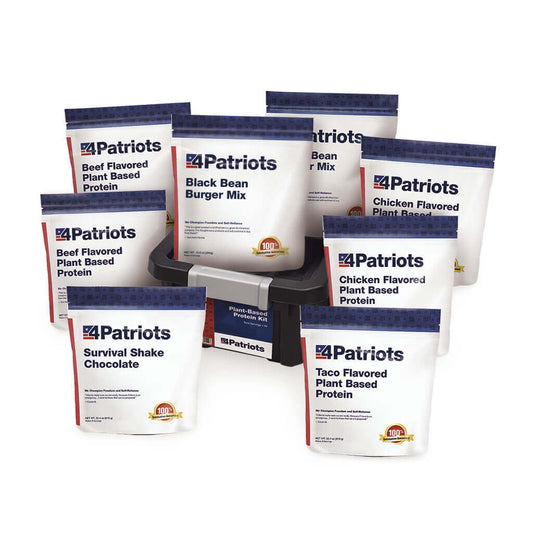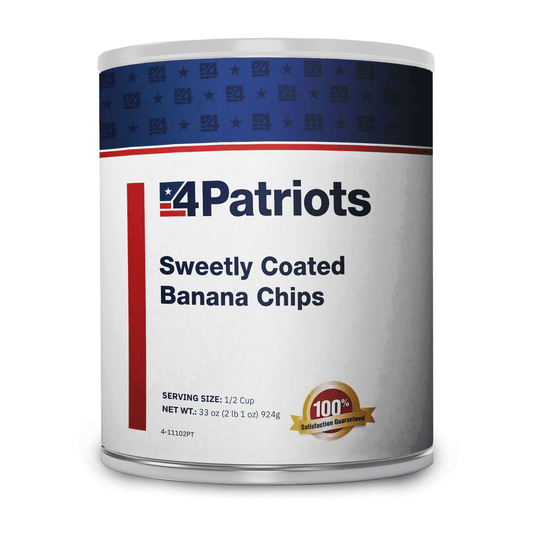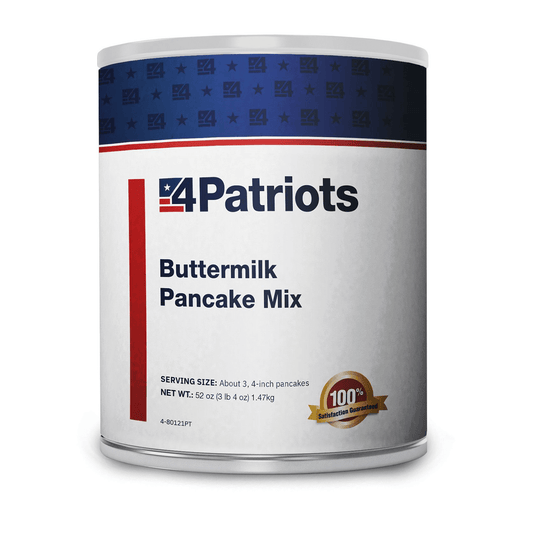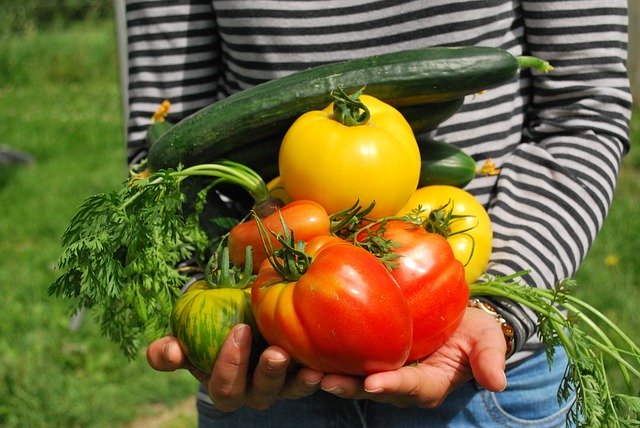
Now’s the Perfect Time to Start a Survival Garden

Even before COVID-19 changed every aspect of our lives, we were seeing high food prices. And food contaminations. And extreme weather disrupting the supply chain.
But what we’ve witnessed in our grocery stores since February has been even worse. There’s nothing like empty shelves to raise the concern level.
These days, people are more worried than ever about both the quantity and quality of food available to them.
Now more than ever, it’s time to step up the pace of our self-reliance. And there’s no better way to do that than securing our food supply for the future.
Grow it now, freeze some for later
I’m talking about starting your own survival garden. We can’t control outside influences like a pandemic. But we can grow our own food while it’s warm and freeze some of it for the colder months.
And that makes this spring the perfect time to start. In addition to the weather cooperating, many of us have more free time due to quarantines. With a garden, you are in control of at least a portion of your family’s food supply.
According to the National Gardening Association, a 600-square-foot garden will yield approximately $600 worth of produce in a year.
The average American consumes close to 2,000 pounds of food annually, so you can see how valuable a home garden can be.
Gardening has many benefits
Simple crops to start with are peas, bush beans, carrots and potatoes. Calorie-rich crops include potatoes, squash, corn, beans and sunflower seeds.
Crops that store well include beets, turnips, carrots, cabbage, rutabagas, kale, onions and leeks.
The physical activity of gardening can also be good you. It will burn calories, help you gain Vitamin D from the sun, reduce stress and aid sleep.
It can also improve your hand strength and self-esteem. It provides a great family bonding experience and saves money. Fewer trips to the store means less exposure to those who might be sick.
Better taste, more nutrition
Growing your own food might seem somewhat “novel” these days. But it wasn’t that long ago that almost all of a family’s food production was accomplished in their yard. Or on their farm.
Only in the past 200 years or so has that changed. In recent years, gardening has become more of a hobby than a way to support a family’s food needs. But the time has come when that is changing.
Two more reasons to grow your own food are because the taste is better than what can be bought in most stores and it contains more nutrients.
The vitamin, mineral and protein content of today’s supermarket food is less than what our parents ate. In some cases by as much as 40 percent.
Losing its value
A former researcher with the Biochemical Institute at the University of Texas-Austin analyzed the nutritional content of 43 fruits and vegetables from 1950 to just before the turn of the century.
He found that broccoli, for example, contained 130mg of calcium in 1950. But only 48mg 50 years later. How about potatoes and spinach?
- Potatoes have lost all their Vitamin A content and 57 percent of their Vitamin C and iron. Plus 28 percent of their calcium.
- Spinach has lost 45 percent of its Vitamin C content. As well as 17 percent of its Vitamin A.
In order to protect crops from insects, many food growers have used pesticides and herbicides. On their apples, celery, strawberries, peaches and many other crops.
They’ve believed that merely washing off those foods will keep them fit for human consumption. But it’s been discovered that those harmful chemicals can be absorbed by fruits and vegetables.
Say ‘no’ to GMO
The Food and Drug Administration informs us that genetically engineered foods are safe to eat. Many scientists disagree. Who do you trust?
GMO fruits and vegetables have higher yields and longer shelf lives. But at what cost? Those who fight against GMO foods contend that not enough testing has been done yet to warrant making these foods widely available for Americans.
Others who take a stand against GMO foods say the testing that’s been done conclusively points out that GMO foods are dangerous. Including results that demonstrate they interfere with the immune systems of animals.
GMO corn has been shown to cause damage to the kidneys, livers and hearts of test animals. And impairs fertility in mice. GMO cotton kills sheep that graze on it.
Pay attention to the 4 S’s
It’s time for us to grow our own healthy food. Using open-pollinated, non-hybrid, heirloom seeds with strong germination rates.
These authentic seeds produce offspring that stay true to their parentage. And produce good-tasting and nutritious vegetables and fruits.
If planted in healthy soil, exposed to enough sunlight and bathed in water, they should produce to their full potential.
Following are some of the factors you should take into consideration when choosing which foods to grow in your garden.
Space. It’s best to choose vegetables and fruits you’ll grow based on what kind of space you have. Some vegetables do very well in small spaces. Others need much more room. Especially for their roots. If you don’t have a yard in which to plant a garden, perhaps you can do window gardening or rent a patch of nearby land.
Sunlight. The amount of sunlight plants need should also be a consideration in what you plant. If your garden gets a lot of sunlight, plants that should thrive include rosemary, tomatoes, onions, beans and squash. But if it receives much more shade than sun, you might want to choose lettuce, spinach and parsley.
Soil. Yet another factor is soil. Different types of soil include clay, sandy, loamy and various combinations. Dirt is made up of organic materials, minerals, water and air. All of which contribute in one way or another to plant growth. Composting is a great way to keep your soil rich with nutrients. Some 30 percent of what we toss in the garbage could be used for composting.
Season. Depending on where you live, the growing season may not be a long one. If you want your crops to feed you and your family year ‘round, despite the weather, you need to preserve your harvests properly. You can accomplish this by freezing, canning, drying and dehydrating your bounty. There are plenty of books and online resources to learn about these processes.
Once your garden starts producing a significant amount of your family’s food intake, you’ll be on your way to achieving food independence.
With food security being threatened, seed sales have been going through the roof around the world. Including here at 4Patriots.
Our non-GMO Victory Garden Seeds Collection is wonderful way to bring fresh vegetables to your garden and self-reliance to your dinner table. You’ll get 2,890 survival seeds from 8 varieties of hardy and delicious heirloom seeds passed down from our forefathers. Sealed in space-age Mylar so you can start your garden today… or years from now!
Featured Products
- Regular price
- From $799
- Regular price
-
- Sale price
- From $799
- Unit price
- per
- Regular price
- $249
- Regular price
-
- Sale price
- $249
- Unit price
- per
- Regular price
- $2,497
- Regular price
-
$3,194 - Sale price
- $2,497
- Unit price
- per
- Regular price
- $2,499
- Regular price
-
$2,994 - Sale price
- $2,499
- Unit price
- per
- Regular price
- From $29.95
- Regular price
-
$119.80 - Sale price
- From $29.95
- Unit price
- per
- Regular price
- $2,499
- Regular price
-
- Sale price
- $2,499
- Unit price
- per
- Regular price
- $499
- Regular price
-
- Sale price
- $499
- Unit price
- per
- Regular price
- $29
- Regular price
-
- Sale price
- $29
- Unit price
- per
- Regular price
- $2,796
- Regular price
-
- Sale price
- $2,796
- Unit price
- per
- Regular price
- $29.95
- Regular price
-
- Sale price
- $29.95
- Unit price
- per
- Regular price
- $97
- Regular price
-
- Sale price
- $97
- Unit price
- per
- Regular price
- $4,999
- Regular price
-
- Sale price
- $4,999
- Unit price
- per
- Regular price
- $49.95
- Regular price
-
- Sale price
- $49.95
- Unit price
- per
- Regular price
- From $69
- Regular price
-
- Sale price
- From $69
- Unit price
- per
- Regular price
- $201
- Regular price
-
- Sale price
- $201
- Unit price
- per
- Regular price
- From $90.97
- Regular price
-
$129.95 - Sale price
- From $90.97
- Unit price
- per
- Regular price
- $999
- Regular price
-
- Sale price
- $999
- Unit price
- per
- Regular price
- $29.95
- Regular price
-
- Sale price
- $29.95
- Unit price
- per
- Regular price
- From $29.50
- Regular price
-
$30.99 - Sale price
- From $29.50
- Unit price
- per
- Regular price
- $129
- Regular price
-
- Sale price
- $129
- Unit price
- per
- Regular price
- From $27
- Regular price
-
$399.80 - Sale price
- From $27
- Unit price
- per
- Regular price
- $3,494
- Regular price
-
- Sale price
- $3,494
- Unit price
- per
- Regular price
- From $199
- Regular price
-
$205.50 - Sale price
- From $199
- Unit price
- per
- Regular price
- $99.95
- Regular price
-
- Sale price
- $99.95
- Unit price
- per
- Regular price
- $29.95
- Regular price
-
- Sale price
- $29.95
- Unit price
- per
- Regular price
- $8.99
- Regular price
-
$29.95 - Sale price
- $8.99
- Unit price
- per
- Regular price
- $99.95
- Regular price
-
- Sale price
- $99.95
- Unit price
- per
- Regular price
- $29.95
- Regular price
-
- Sale price
- $29.95
- Unit price
- per
- Regular price
- $59.95
- Regular price
-
- Sale price
- $59.95
- Unit price
- per
- Regular price
- $11.98
- Regular price
-
$29.95 - Sale price
- $11.98
- Unit price
- per
- Regular price
- $44.95
- Regular price
-
$44.95 - Sale price
- $44.95
- Unit price
- per
- Regular price
- $24.95
- Regular price
-
$49.95 - Sale price
- $24.95
- Unit price
- per
- Regular price
- $114.95
- Regular price
-
- Sale price
- $114.95
- Unit price
- per
- Regular price
- $189
- Regular price
-
- Sale price
- $189
- Unit price
- per
- Regular price
- $499
- Regular price
-
- Sale price
- $499
- Unit price
- per
- Regular price
- $59.95
- Regular price
-
- Sale price
- $59.95
- Unit price
- per
- Regular price
- $39.95
- Regular price
-
- Sale price
- $39.95
- Unit price
- per
- Regular price
- $59.95
- Regular price
-
- Sale price
- $59.95
- Unit price
- per
- Regular price
- $19.95
- Regular price
-
- Sale price
- $19.95
- Unit price
- per
- Regular price
- $99.95
- Regular price
-
- Sale price
- $99.95
- Unit price
- per
- Regular price
- $69
- Regular price
-
- Sale price
- $69
- Unit price
- per
- Regular price
- $14.27
- Regular price
-
$21.95 - Sale price
- $14.27
- Unit price
- per
- Regular price
- $149.95
- Regular price
-
- Sale price
- $149.95
- Unit price
- per
- Regular price
- $79.95
- Regular price
-
- Sale price
- $79.95
- Unit price
- per
- Regular price
- $39.95
- Regular price
-
- Sale price
- $39.95
- Unit price
- per
- Regular price
- $114.95
- Regular price
-
- Sale price
- $114.95
- Unit price
- per
- Regular price
- $39.95
- Regular price
-
- Sale price
- $39.95
- Unit price
- per
- Regular price
- $99.95
- Regular price
-
- Sale price
- $99.95
- Unit price
- per
- Regular price
- $24.95
- Regular price
-
- Sale price
- $24.95
- Unit price
- per
- Regular price
- $24.95
- Regular price
-
- Sale price
- $24.95
- Unit price
- per



